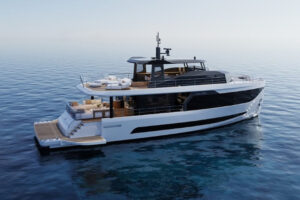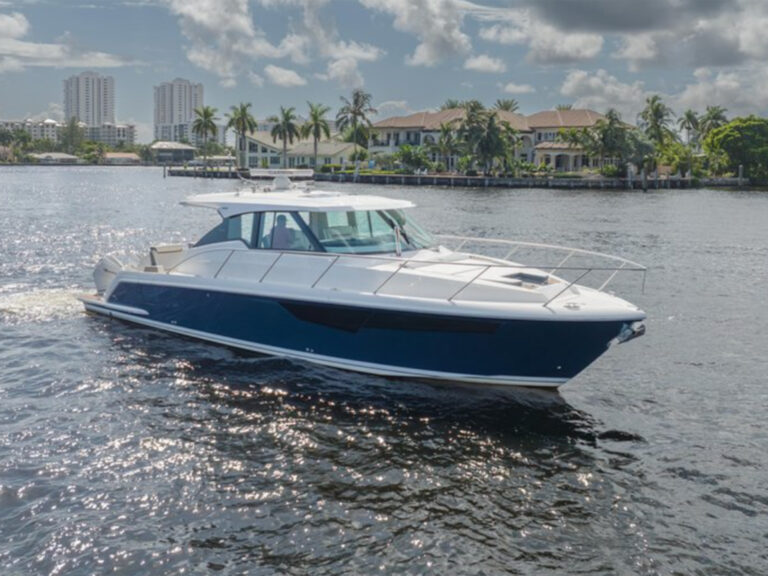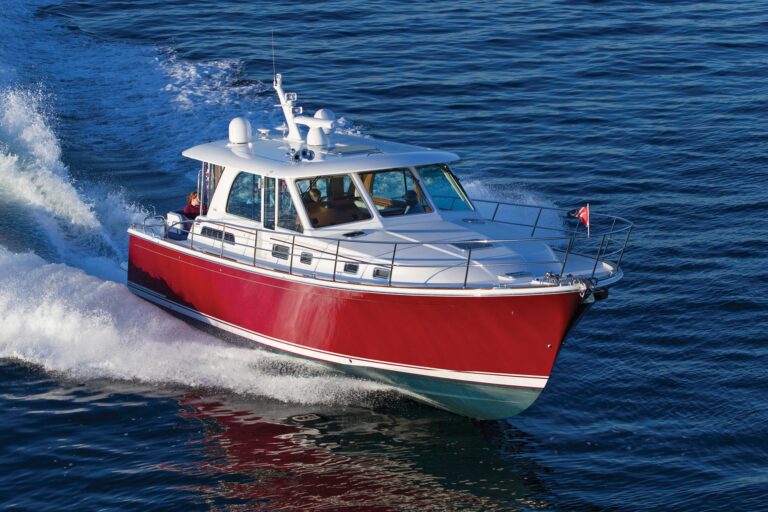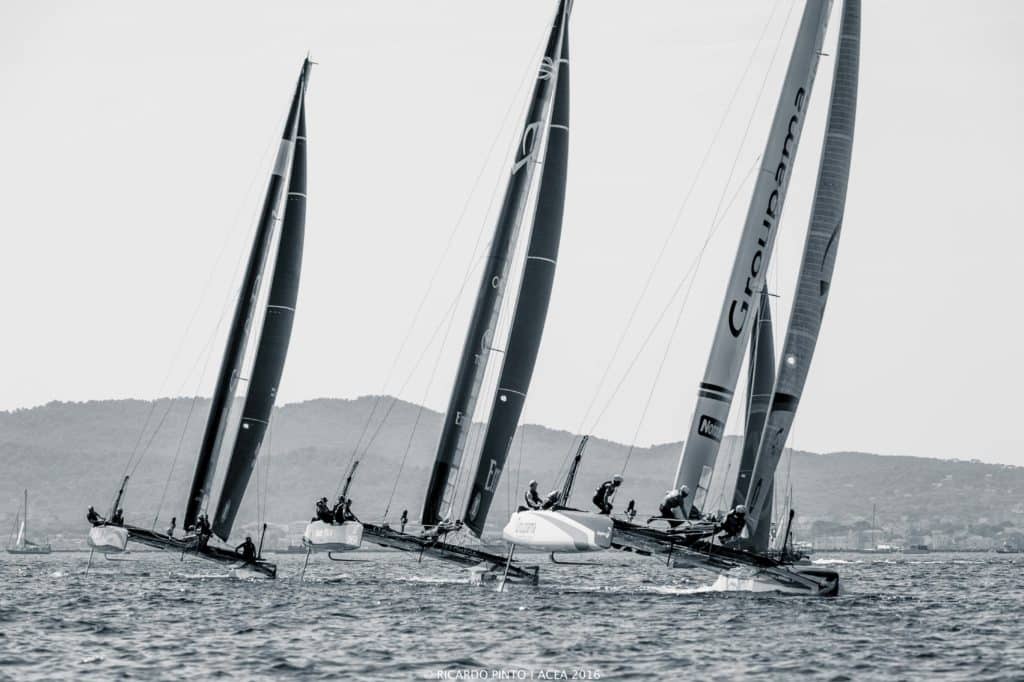
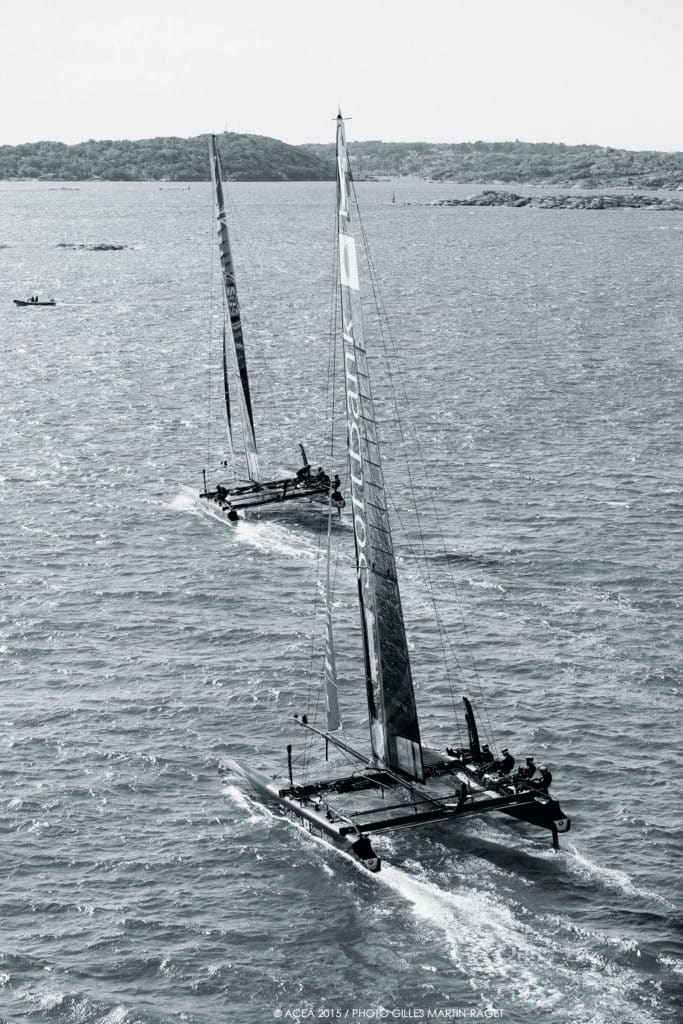
Welcome to the 35th America’s Cup, a competition to be held in Bermuda aboard wingsail-powered catamarans with sophisticated hydrofoil systems, letting them fly at speeds north of 50 knots. Unlike Cups of yore, AC35 (June 17-27) will be contested using nearly identical One Design 50-foot catamarans that use human-powered hydraulic controls for certain need-power-now applications, allowing a six-sailor crew to rip around the racecourse at a mind-bending pace.
The America’s Cup is the oldest continually contested trophy in international sports, one that industry titans emptied their coffers for when challenging to win. Only four nations — the United States, Australia, New Zealand and Switzerland — have won the “Auld Mug,” with the venerable New York Yacht Club as its custodian from 1851 to 1983.
Traditionally, America’s Cup regattas were waged aboard custom-designed monohulls drawn to a particular rule (such as 12-Metre), but four America’s Cup races have used multihulls, namely the 1988, 2010, 2013 and 2017 defenses.
Unlike most regattas, in which fleets of yachts compete against one another, the America’s Cup is one-on-one. It’s a chess-game-cum-wrestling-match between the defender and challenger, with the latter determined by the Louis Vuitton Qualifiers and the Louis Vuitton Challenger Playoffs (May 26 to June 12). Different rules and tactics apply, making this an incredibly specialized sport that has attracted such room-filling personalities as Australian businessman Alan Bond and Americans Ted Turner and Dennis Conner.
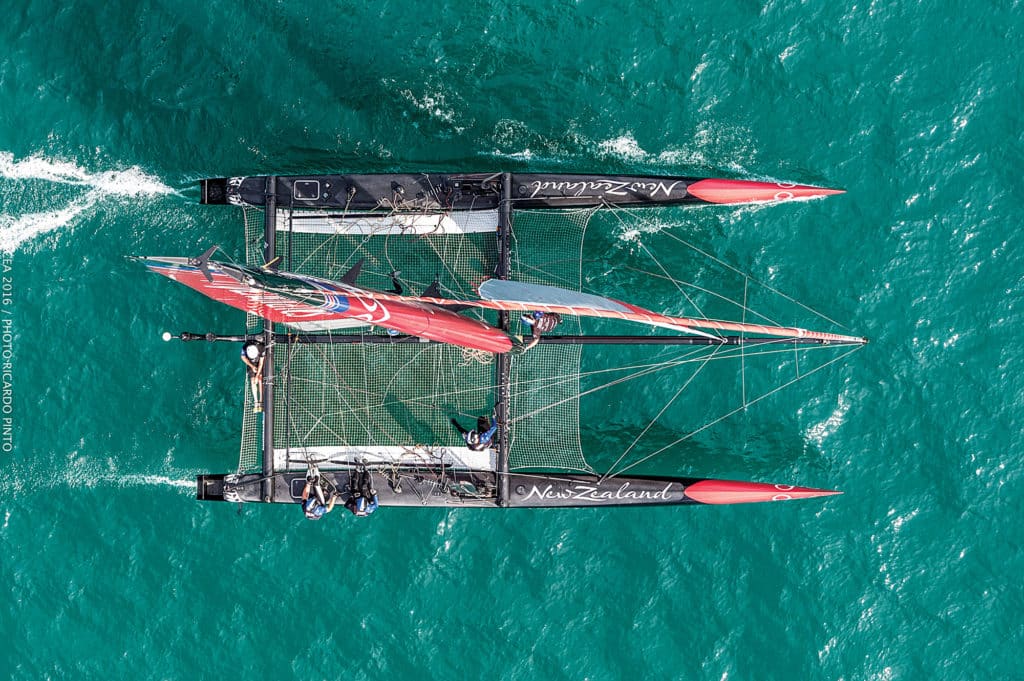
After winning the 33rd America’s Cup in February 2010, Larry Ellison’s Oracle Team USA (OTUSA) chose to defend AC34 on its home waters of San Francisco Bay. But after a second win in 2013, OTUSA selected Bermuda’s Great Bay for AC35’s venue.
The racecourse within this natural amphitheater has windward-leeward legs (each roughly 2 nautical miles long, twice around) as well as short reaching legs for the start and finish. Back-of-the-napkin math reveals that, at 40-plus knots, it will take only a few minutes for the yachts to hydrofoil (roughly) 2 miles, placing a premium on drum-tight crew choreography and boat-handling skills
“Buckle up. AC35 promises to be a wild ride.”
If you’re envisioning Bobby Fischer playing a “friendly” game of chess against Gary Kasparov, all the while sprinting at a clip that would grab Usain “Lightning” Bolt’s attention, you’re there.
Prior to AC35, nine Louis Vuitton America’s Cup World Series (LVACWS) regattas unfurled in 2015 and 2016. They saw OTUSA and five challengers — Artemis Racing, Emirates Team New Zealand, Groupama Team France, Land Rover BAR and SoftBank Team Japan — competing internationally aboard 45-foot foiling catamarans.
While the LVACWS is separate from AC35, the winner (Land Rover BAR) enters the Louis Vuitton Qualifiers with a two-point scoreboard advantage, a plum that could provide the team with some critical AC35 end-game leverage.
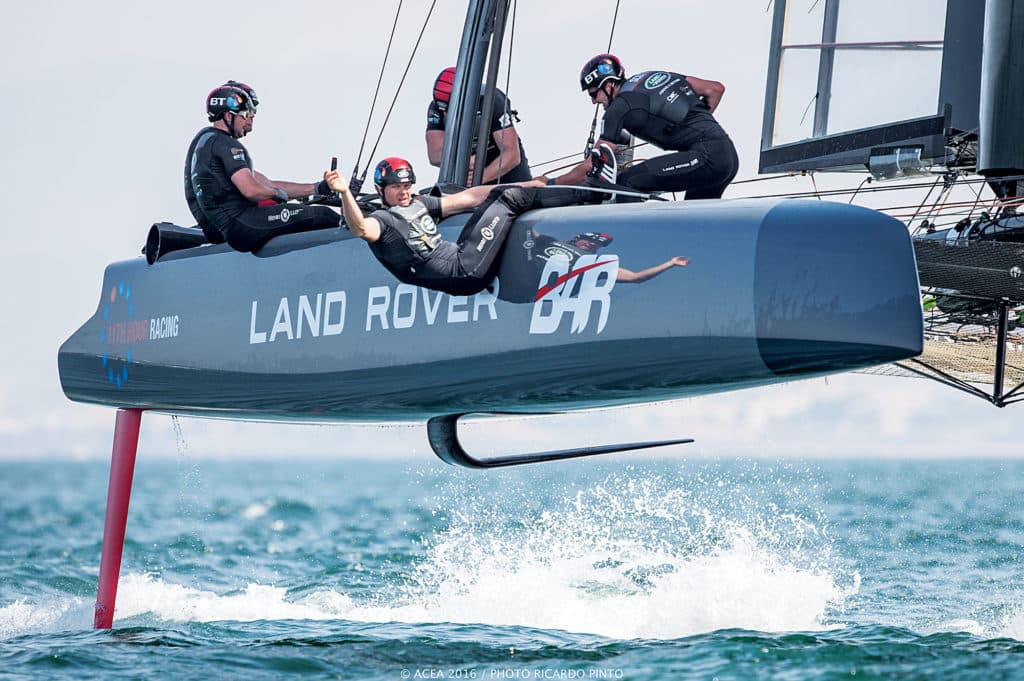
In our America’s Cup coverage, you’ll find an overview of the teams, profiles on three top AC35 skippers, an interview with AC34’s winning designer and an Insights column (page 76) that explores the electronics and technology enabling the event’s award-winning televised broadcasts.
Additionally, Yachting will cover the Louis Vuitton and Cup races online via our digital hub with breaking news, from controversy to conquest.
Buckle up. AC35 promises to be a wild ride. Giddyap!


